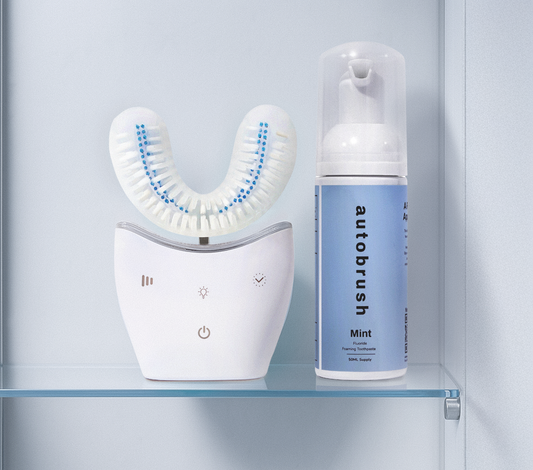
Sensory Brushing Technique
Sensory brushing is a straightforward but effective therapy. It assists people with sensory processing challenges in navigating the world more easily. This hands-on technique is widely used in occupational therapy to promote calm, focus, and self-regulation.
Whether you’re a parent, teacher, therapist, or just curious, this guide will help you understand sensory brushing. You’ll learn about its benefits and how to use it effectively.
What is Sensory Brushing?
Sensory brushing is a therapeutic technique that uses firm, rhythmic strokes on the skin with a specialized sensory brush. Rooted in occupational therapy, this method is designed to help individuals better process sensory information, leading to improved regulation and comfort.
This technique is often associated with the Wilbarger Protocol, a structured approach emphasizing safe, consistent application. When done correctly, sensory brushing calms the nervous system and enhances sensory integration, resulting in a more balanced state.
Benefits of Sensory Brushing
For individuals with sensory processing disorders, sensory brushing offers significant advantages:
- Improved Focus: Sensory brushing helps the brain organize sensory input. This support boosts concentration, making tasks like homework, chores, and mealtimes easier to handle.
- Reduced Anxiety: The calming effects of sensory brushing act as a reset button during overwhelming moments, grounding individuals and reducing stress.
- Enhanced Self-Regulation: This technique calms emotional and physical reactions. It results in fewer meltdowns, smoother transitions, and a better sense of balance.
- Increased Body Awareness: Sensory brushing helps link physical feelings to actions. This makes daily tasks, like getting dressed or playing sports, feel more natural.
- Stronger Social Skills: Sensory brushing reduces sensory overload, helping people feel more comfortable in social situations. This boosts their confidence and ability to connect with others.
Incorporating sensory brushing into daily routines empowers individuals to feel more independent and comfortable in their environment.
Sensory Brushing Technique Explained
To use sensory brushing effectively, follow these steps:
- Select a sensory brush appropriate for the individual’s needs.
- Apply firm, even pressure in long strokes on the arms, back, and legs.
- Avoid sensitive areas, including the face, stomach, and scalp.
- Perform brushing for 2–3 minutes, several times daily, as advised by an occupational therapist.
Tip: Consistency is crucial. Establishing a predictable routine helps the nervous system adapt and integrate sensory input over time.
Tips for Daily Integration
Here’s how to incorporate sensory brushing into everyday life:
- Pair brushing with daily transitions, like waking up or winding down for bed.
- Use visual schedules or cues to create predictability.
- Make the experience interactive by letting the individual choose the timing or setting.
Gradually introducing sensory brushing ensures comfort and smoother adoption into daily life.
Personalizing the Technique
Every individual is unique, so tailoring sensory brushing to meet specific needs is essential:
- Begin with shorter sessions, increasing duration as comfort grows.
- Experiment with different brush types to find the most suitable one.
- Adjust speed and pressure based on the individual’s feedback.
This personalized approach fosters trust and cooperation, enhancing the technique’s effectiveness.
Addressing Challenges
Introducing sensory brushing may come with challenges. Here’s how to navigate them:
- Resistance: Start slowly, building comfort and trust over time.
- Overstimulation: Monitor for discomfort and adjust the technique as needed.
- Clear Communication: Explain each step to reduce anxiety and build confidence.
Patience and flexibility are key to successfully implementing sensory brushing.
Sensory Brushing as Part of a Holistic Strategy
Sensory brushing is most effective when paired with other therapies, such as occupational therapy or play-based sensory activities. This comprehensive approach addresses a wider range of sensory needs, enhancing the overall benefits.
Improve Sensory Experiences with autobrush®
For kids with sensory sensitivities, consider the Sonic U-Shaped Toothbrush for Kids, which offers a gentle, hands-free brushing experience. This toothbrush simplifies oral care, reducing the tactile discomfort often associated with traditional brushing. Its inclusive design makes it suitable for children, and it is easy to use, which is great for those who struggle with fine motor skills. Additionally, it’s less stimulating than regular toothbrushes.
Conclusion
Sensory brushing is more than a therapy technique—it’s a pathway to greater calm, focus, and independence. Caregivers and therapists can enhance the quality of life for individuals with sensory processing challenges by incorporating specific strategies into daily routines. Personalizing these approaches makes a significant difference. And by integrating the right tools into your kids’ daily routines, parents can support both sensory needs and dental hygiene effectively.















































